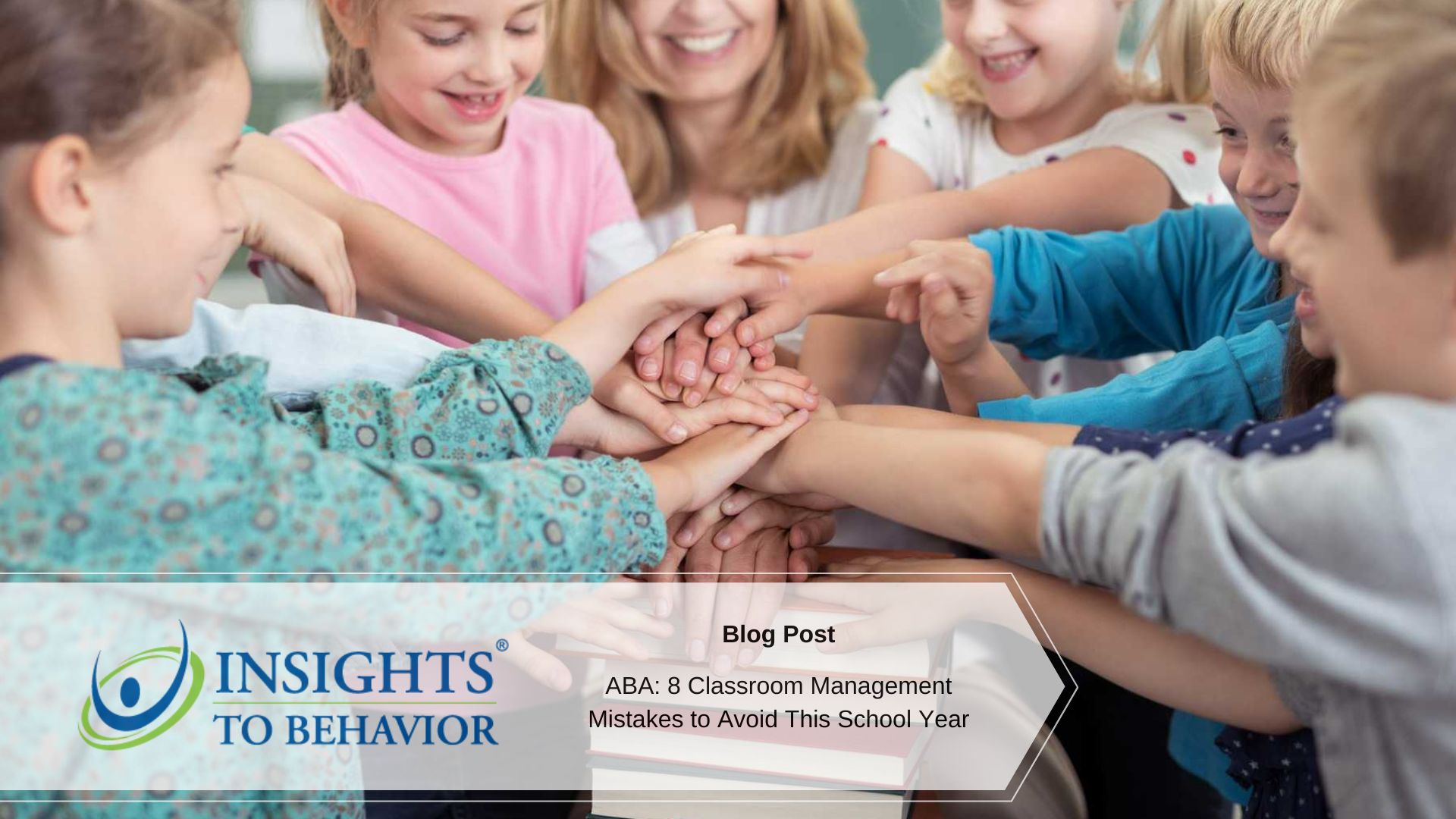If you asked any educator, they would be able to describe the feeling of an unproductive class. Everyone has been there at one point or another, where you walk away from the school day feeling defeated, and you’re more exhausted than ever. It’s a feeling no educator wants to feel.
Every teacher wants to provide a safe place for their students to learn. Especially those teachers who have students with special needs. And that’s exactly where ABA strategies can come in handy.
Applied Behavior Analysis provides a great foundation for teachers to build their classrooms. However, it can be necessary for some to have a perspective shift for these tactics to be effective. Check out these mistakes you should avoid while managing your class to get started.
1. Focusing on the Small Things
The easiest mistake to make when working with children is to focus on the surface-level behaviors they’re doing. It’s really easy to get caught up in every detail that isn’t exactly how we want it to be.
This can become a vicious cycle. Focus too long on all the small mistakes, and that’s all you’ll be able to see.
The reality is that there are usually a lot of good things kids are doing as well. When we focus on those good things, we will see more of them. Not only that, but kids will often do more of those things we praise as well.
2. Forgetting to Keep Learning
Too often professionals forget to keep learning as they continue in their careers. It happens in every industry and can be a real problem. This fixed point means there’s no evolution or improvement.
In order to be the best educator you can be, you should do your best to keep learning how to manage your classroom. Signing up for a webinar is a great way to use virtual learning to see what’s happening in the industry. You’ll learn new strategies that you can implement right away to keep at the top of your game.
3. Too Much Inconsistency
When you feel like your classroom is out of control, it’s easy to fall into inconsistency. Either you want to try several new things or you’re just too overwhelmed to have a solid plan. But switching things up all the time will end up causing more harm in your class than anything else.
Children (really humans) thrive on consistency. The more we know what to expect, the better we can meet those ideals.
When creating classroom routines, do your best to stick with them daily. Before making any changes, give that routine enough time to become a habit to see if it will work for your students.
4. Failing to Involve the Parents
Disruptive behavior is a huge problem for all kinds of classrooms. However many teachers are failing to tap into one of the best resources; parents.
Studies show that parent involvement has a positive impact on social skills. It’s important to have a lot of communication with the parents to get more insight into the child. They can also help by practicing skills and classroom schedules at home.
5. Relying on Outdated Discipline
Discipline in the classroom has changed a lot over the decades. Many teachers rely on outdated practices to help bring order to their classrooms. These things may work in the immediate but not to create long-term behaviors. A shift towards positive reinforcement has seen great results in many classrooms.
When a child is praised for the good they’re doing, they want to do more of it. When they aren’t getting any attention for their poor behaviors, they’ll have no incentive to keep going.
This route of more positive reinforcement creates a safe learning environment.
6. Lacking a Real Understanding of the Problem
Poor behaviors can quickly derail an entire classroom. It can be tempting to try to shut down those behaviors as quickly as possible and then move on.
This will bring more order to your classroom. You’ll probably be right back where you started soon.
It’s better to take a little bit more time to figure out what the root of the behaviors is. When teachers understand why their students are doing what they’re doing, they can make a better plan. Working with the child to come to a solution can have longer-lasting results.
7. Coming to Class Without a Plan
The worst mistake you can make is coming to your class without a plan. In order to have good classroom management, you have to know what you’re going to be doing that day.
Not only should you have a plan for what you’re teaching, but you should also have a plan for when things start to get out of hand. You know your students and the typical issues you face. Thinking through how you’re going to handle these problems when they come up sets you up for more success.
Participating in management training helps it become much easier to make these plans for your classroom.
8. Having Unrealistic Expectations
Lastly, many teachers get more frustrated than necessary because they have unrealistic expectations. It’s not possible to have a classroom that doesn’t have any issues, so you shouldn’t aim for that. Instead, take a realistic look at what you and your students can do and work towards that.
Learn More ABA Strategies for Managing a Classroom
Working on changing these perspectives will help you start to transform your classroom. You’ll be able to add more ABA strategies to help more students reach their potential in learning.
Whether you’re working in a physical or a virtual classroom, it’s important to keep learning how to be a great teacher. The more strategies you have, the better control. And that means you’ll be able to focus on what really matters; teaching your students.
The Insights to Behavior curriculum is full of helpful information to help all kinds of school professionals. Teachers, administrators, and specialty educators can all find value in our courses. Check out our courses or schedule a demo of our intervention software.






